Back in the spring Oliver and I started going out for a walk after supper every night.
In the beginning it was an entirely practical thing: I was taking some time off going to the gym, and needed a way of helping my body recover from a day of typing. It was simply an alternative to watching Yet Another Seinfeld re-run.
But our nightly walk quickly became something more than that: an opportunity for Oliver and I to have a talk, every day.
I thought of our nightly walk when reading Five things teachers and parents can do to engage boys in The Globe and Mail; suggestion number one includes:
Talk a walk around the block before your child sits down to do his homework and use the time to brainstorm on big projects and discuss the assignments. (Boys are often more likely to work out their thoughts verbally with mom or dad, while doing an activity that doesn’t require a face-to-face chat.)
I can confirm that this is indeed the case: it usually takes about 20 minutes of walking for Oliver and I to get to the place where we can have a regular conversation; leading up to that there’s a lot of fiddling and faddling around while we settle into the walk. It’s only after we’ve got into the rhythm, and have both settled down enough, that we can get to talking.
And while there’s plenty of room for us to talk about gravel boats and sushi restaurants and Homburg hotels and the current position of the Moon while we’re walking, we also get a chance to talk about what he learned in French that day, and who he played with at recess, and how Mrs. Butler is teaching them sign language, and about what The Beatles were, and about what to do about other kids who have a short fuse.
Often Oliver will mention something off-hand, like “and then there was this problem,” that, if teased out gently over the walk, will reveal itself as a closely-felt concern that would never come up in the normal course of everyday life.
None of this would be possible if I simply sat Oliver down after supper at the table in a “face-to-face chat,” and grilled him about his day in the usual “so, what did you do at school today?” style: it needs the “white space” of the walk to work.
Most of the time I sort of feeling like an impostor playing the role of the father in our daily drama; when Oliver and I go out for a walk it feels, for an hour or so every night, like actual parenting.
Almost every Thursday for the last 7 years me of Reinvented has joined they of silverorange, plus occasional special guest stars, at Interlude for a meal that’s come to be known as Gong Bao Thursday.
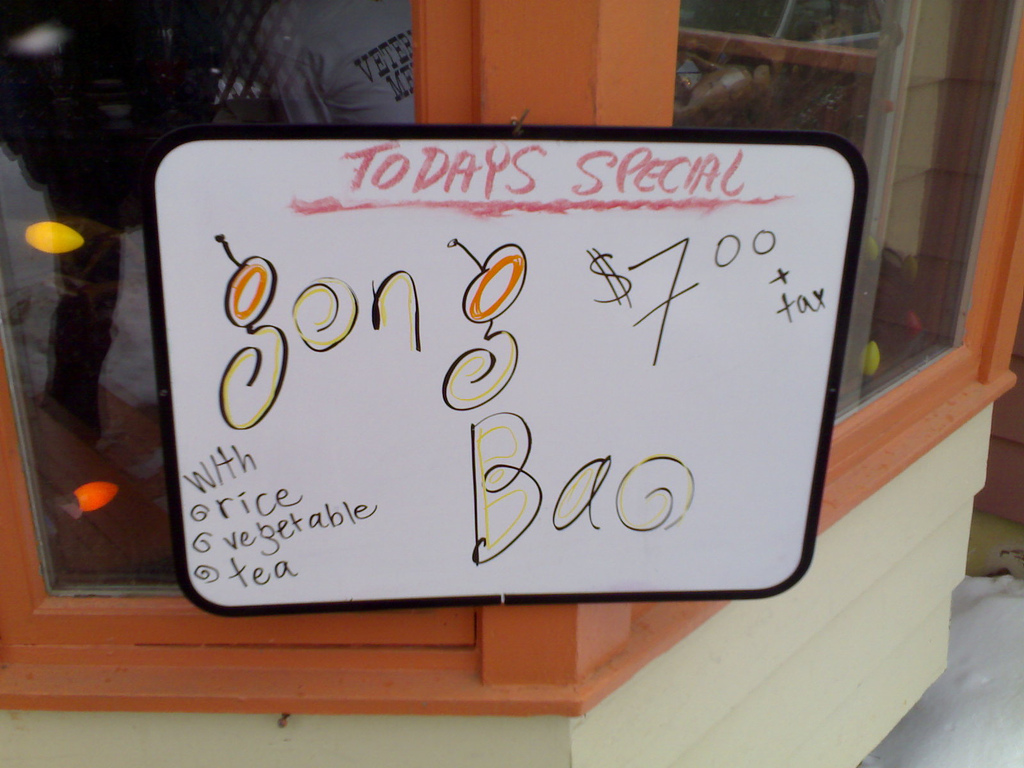
In the early days it was just a few of us, which was good because Interlude was located in a tiny intimate sliver of a space opposite the fire hall in downtown Charlottetown. If there were more than a few of us in those days we had to crowd around a small table in the very back, sitting on stools or fold-out chairs, and completely blocking access to the washroom. Here’s a shot of Dan and Steven, two of the usual bunch at the old place:
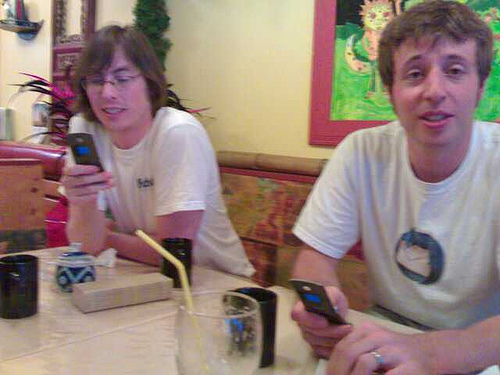
When Interlude moved to a larger space on University Avenue just north of Euston we followed, and our numbers have expanded to the point where some weeks we’ve had 10 people around the table.
The move from small-old-Interlude to expanded-new-Interlude back in 2007 took forever and we almost thought Gong Bao Thursday was done for, but, finally, they reopened:
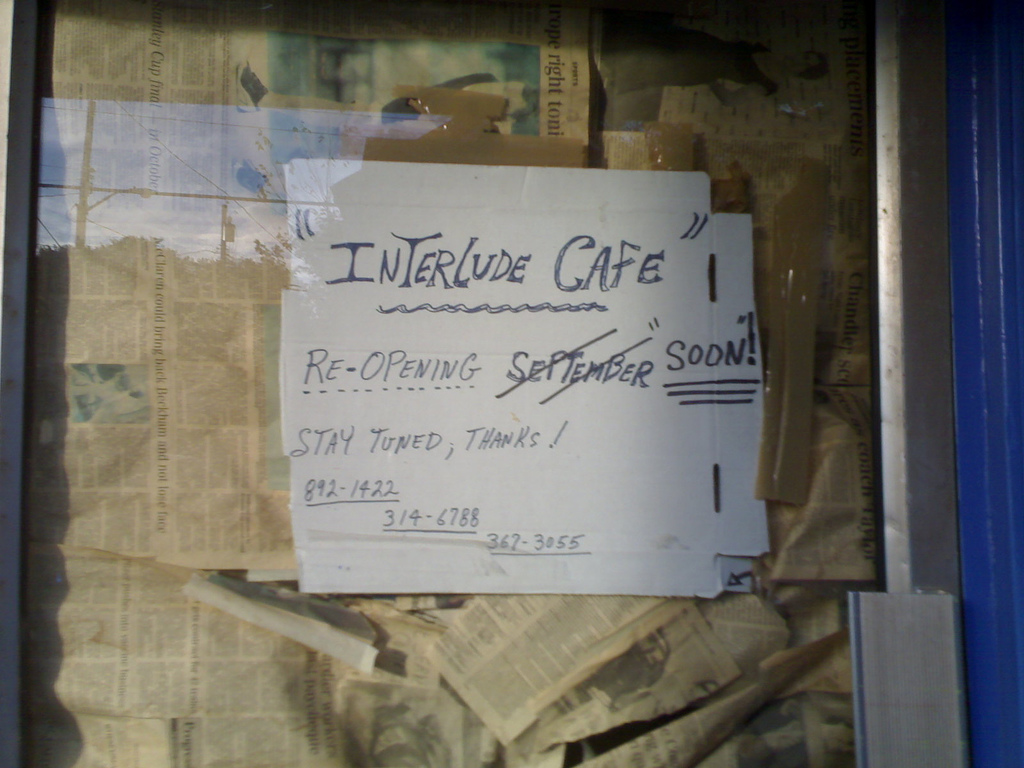
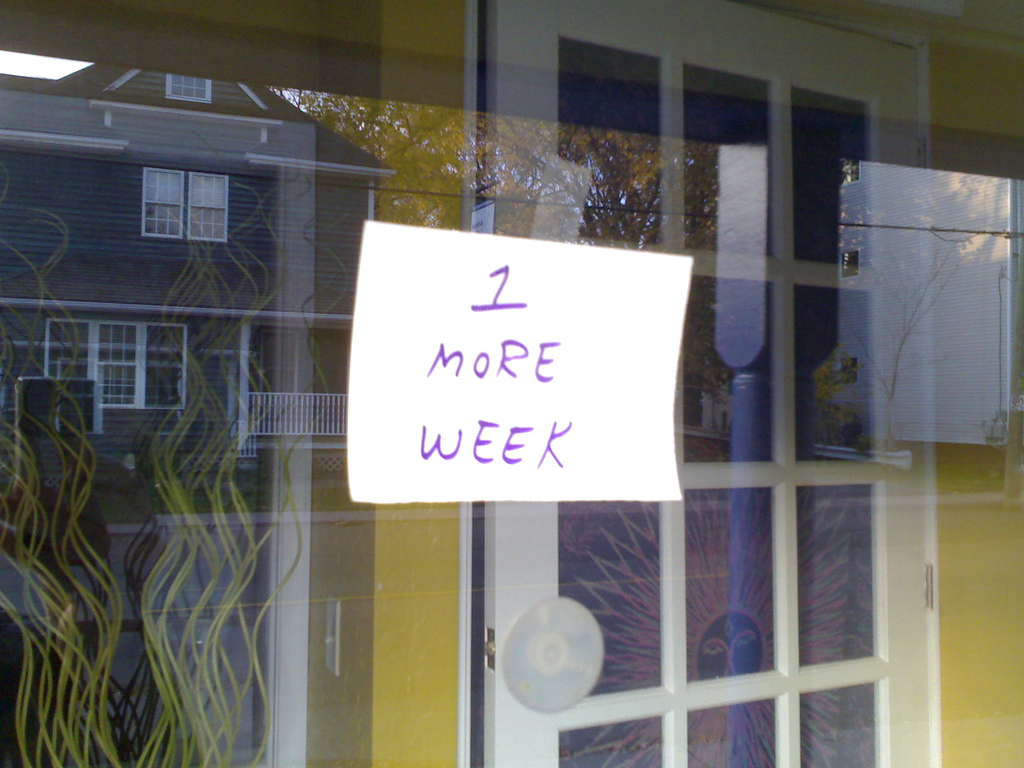
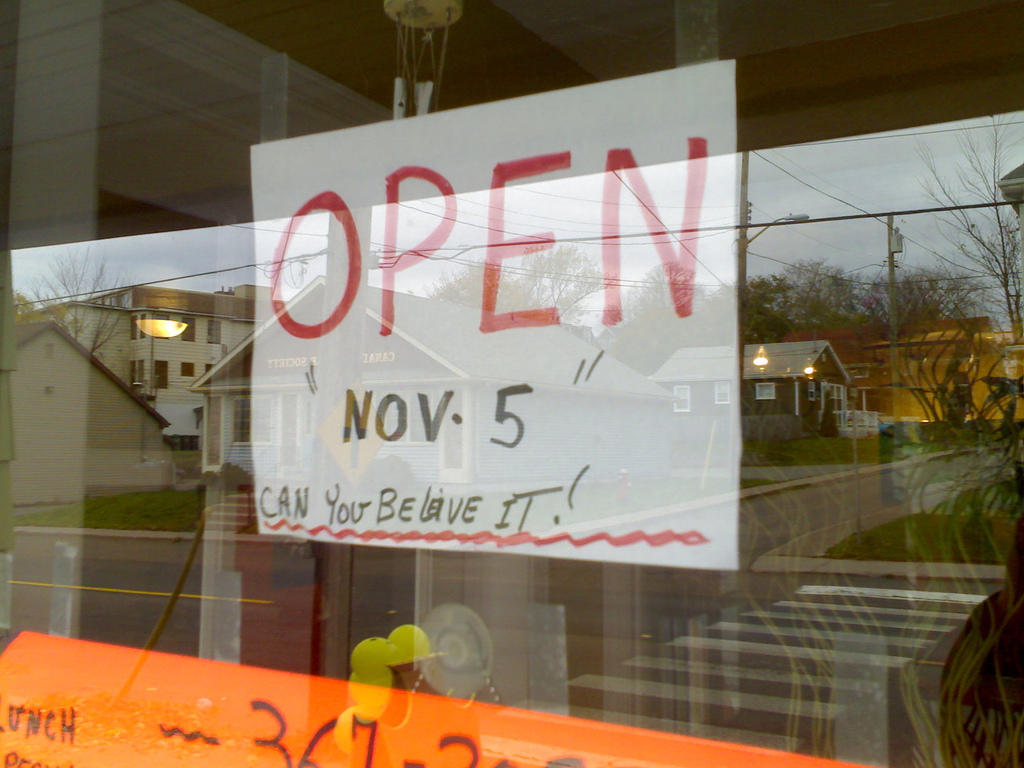
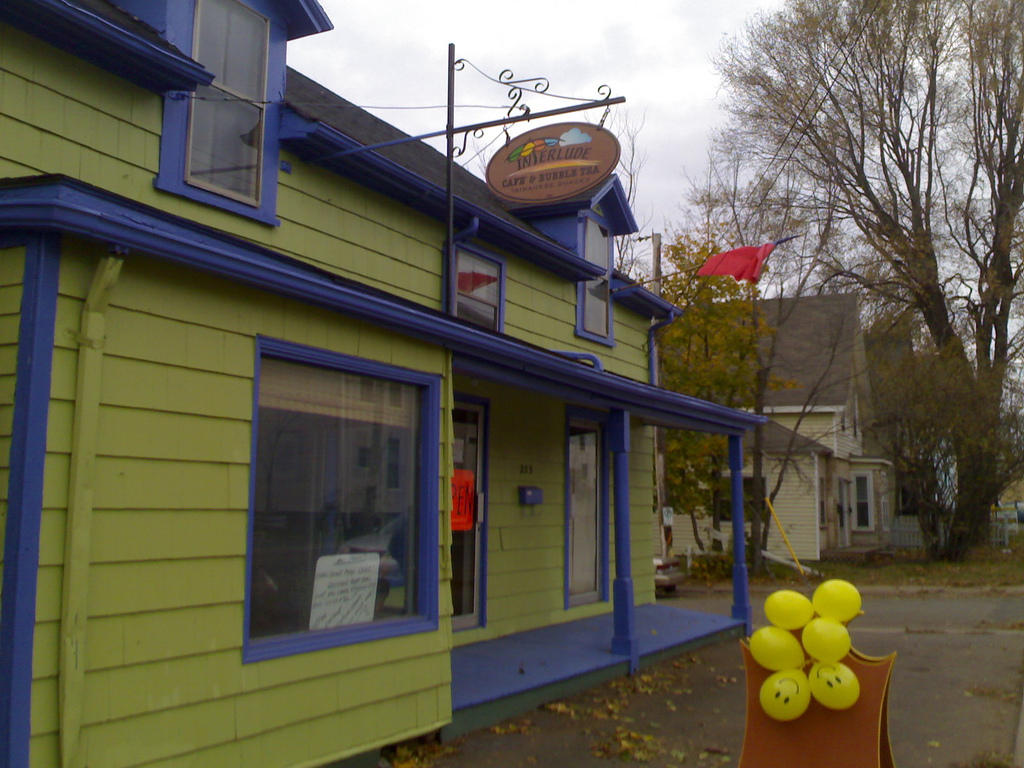
In recent years we’ve had our own table set aside for us, already set up with chopsticks, glasses of water and cups of tea, ready for our descent. In all those years Ally, personable owner of Interlude, reports that there was only a single week where nobody showed up for Gong Bao Thursday.
Gong Bao, for the uninitiated, at least as made at Interlude, looks like this (photo by Dan James):
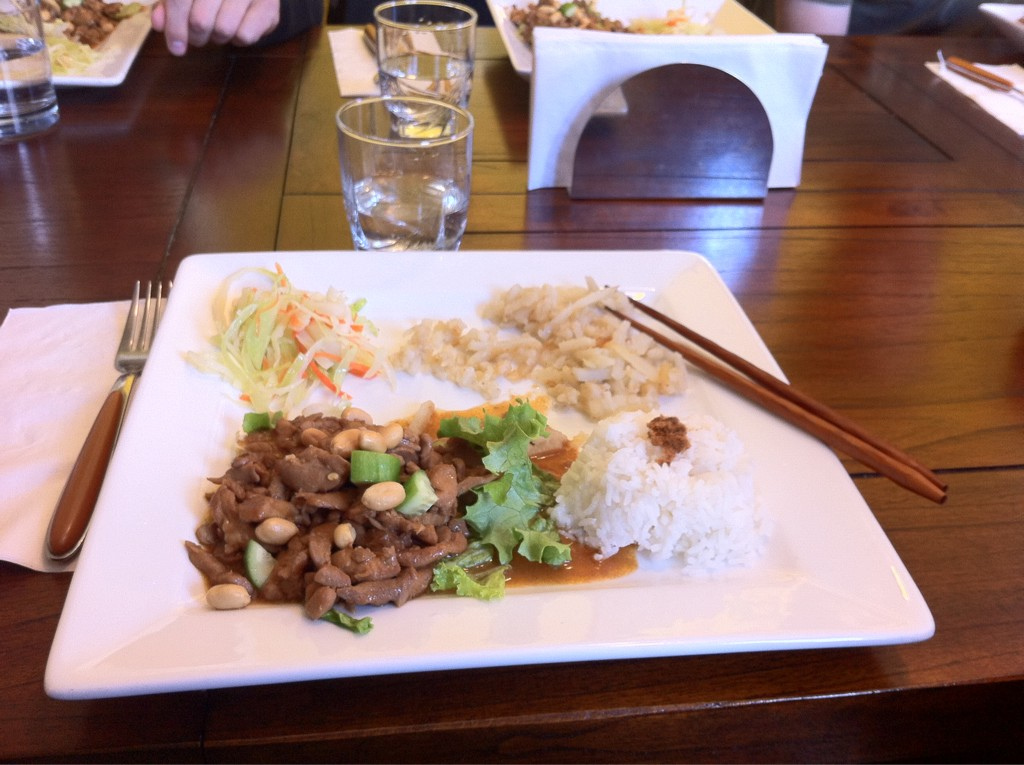
It comes on a big square plate, and is a meal of four parts: spicy chicken over a bed of lettuce sprinkled with peanuts, steamed rice with a dollop of shaved pork, warm potato salad and a cabbage salad. The meal includes a cup of jasmine tea and a glass of water. Before tip it costs $9.82.
Gong Bao was just Gong Bao in the early years, but then at some point Ally started offering pecan pie for dessert:
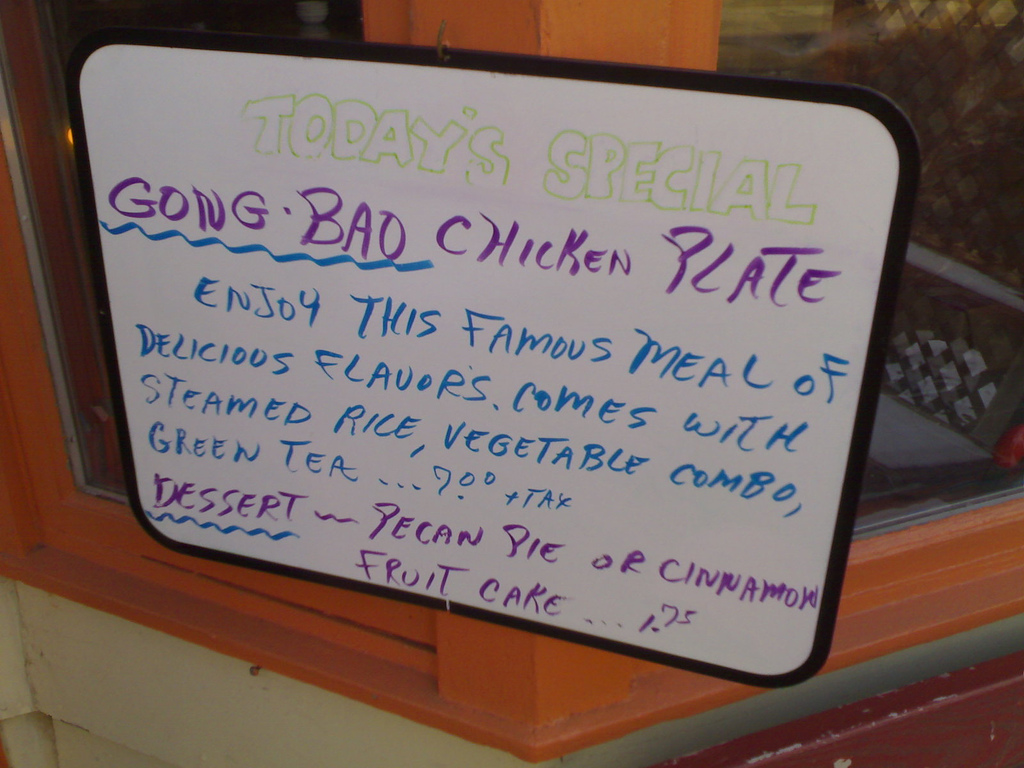
For several years the pecan pie was a treasured part of the Gong Bao ritual. And then, one day, it was gone. Allie explained this away by trying to suggest that pecan pie wasn’t sufficiently “Asian” enough for the place, and for a few weeks she tried to tempt us with novel Asian-seeming desserts. But nobody bit, and so Gong Bao went dessertless. We never quite got over it. But the power of the Gong Bao itself ensured that it wasn’t enough to break us.
After seven years our weekly appearance for Gong Bao has come to have the feel of a family meal: there are no menus or ordering involved; we just all amble in at a time coordinated by last-minute instant message (“Time for Gong Bao?”), and Ally or her partner Gary makes a count of us to know how many Gong Bao to prepare, and a few moments later the food arrives.
The biggest Gong Bao Thursday came back in the fall of 2008 as a prelude to the Zap Your PRAM conference: we invited everyone who was in town to join us as a guest star, and a lot of people showed up:
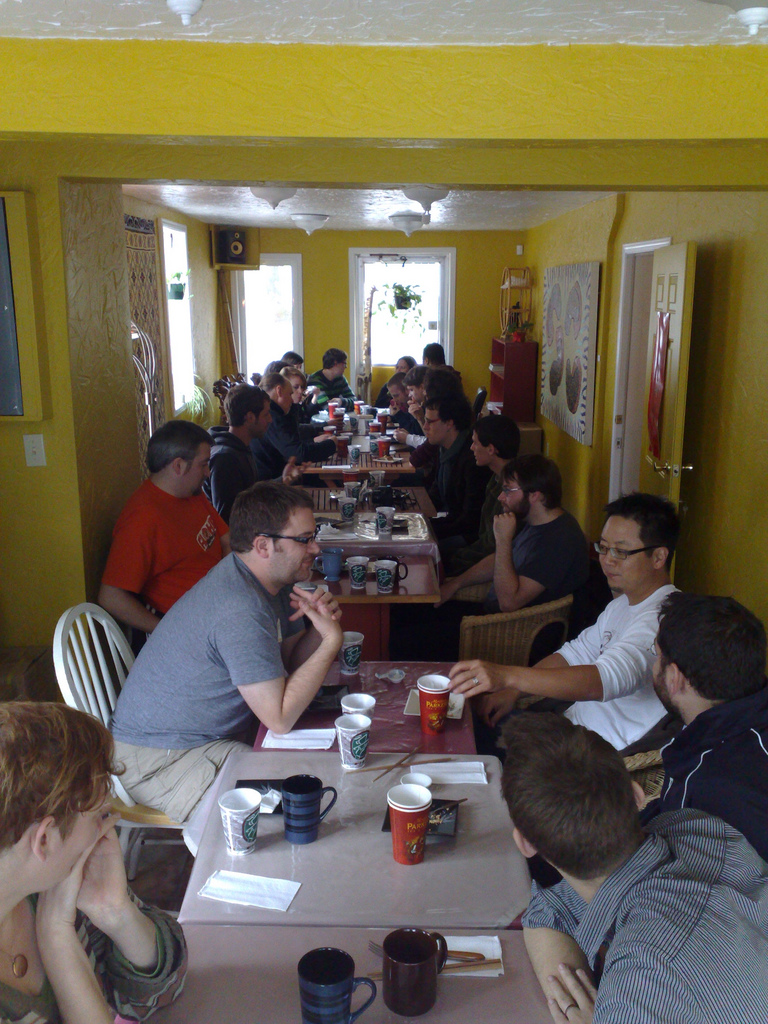
(That’s most of the people who invented the Internet-as-we-know-it in that picture).
Like every week, Ally was able to handle this flood of people with grace and a smile on her face, and the circle of Gong Bao grew ever-wider.
Until today. The Last Gong Bao.
Allie is moving on to new pursuits and the Interlude is coming under new management as of November 1. While it’s possible that the new owners will serve Gong Bao too, today was really the “last Gong Bao” in the traditional sense, especially for those of us averse to change of any sort.
So, thank you to Ally and to Gary and daughter Teresa (who was, I think, only 8 or 9 when we first started) and to all the servers who’ve served us over the years: you will be missed. As will the tasty Gong Bao.
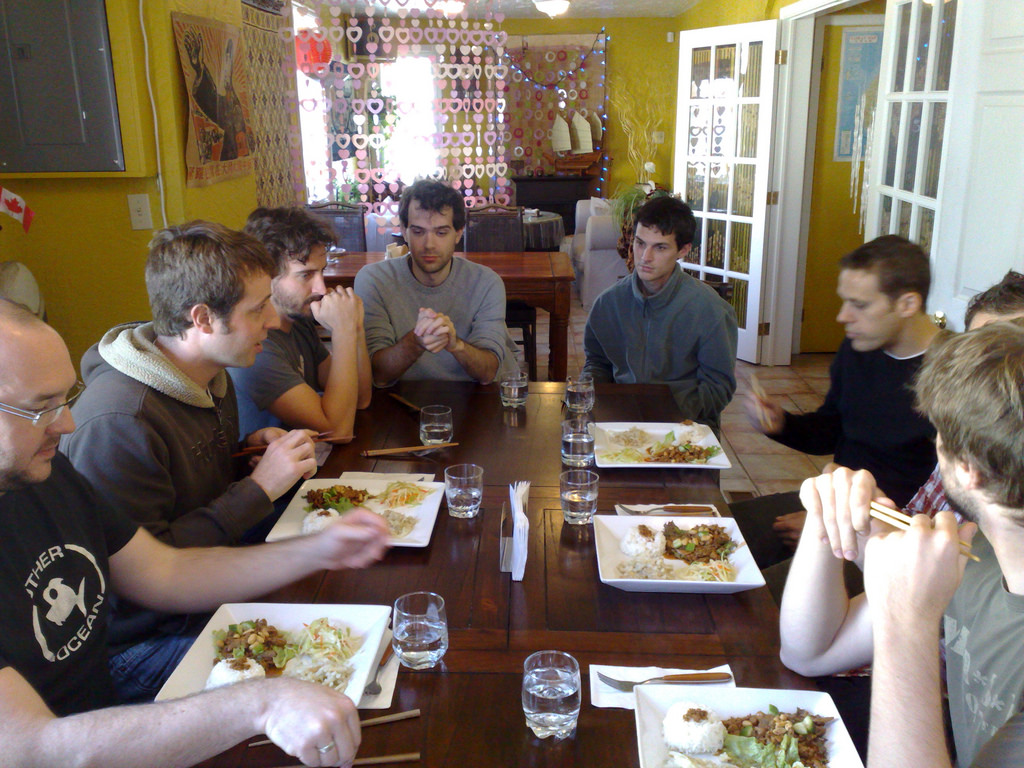
From 2010 in Prince Edward Island, the Proceedings of the Minister’s Summit on Learning:
There was a clear and widespread understanding among participants that the traditional learning model requires some modification to adapt to the changing social and economic context in which Islanders live. In the global society, students elsewhere are being given the advantages of a larger toolkit, developing not only the knowledge content, but also the skills needed to flourish in the information and imagination age; it would be a disservice to our Island learners to deny them those same advantages. The Summit acknowledged that some students do very well (or at least cope) in traditional, lecture-based formats, but there is room to improve. The vast majority of Summit participants supported the call for re-balancing the use of the learning tools to make more room for skill-building through experiential and project-centred learning.
The Summit did not suggest an education revolution; however, it did suggest that the current education system needs to adapt and evolve to enable students to gather the skills needed to be life-long learners. Much of the knowledge and information with which we will use in our lives in twenty years’ time does not yet exist, so it is not possible to teach people everything they will ever need to know in thirteen years of public schooling. However, they can acquire the skills and confidence that will enable them to continue to learn as required throughout their life paths. Skills and confidence come from the experience and practice involved in project-centred learning. This adaptation does not require an end to lecture-based learning, but rather a search for appropriate opportunities to introduce more project-based learning and integrate content and skill learning.
From 1968, the “Hall-Dennis Report” in Ontario, Living and Learning: The Report of the Provincial Committee on Aims and Objectives of Education in the Schools of Ontario:
Needs and aspirations change, and this is especially true of our time. The condition of dynamic economic and cultural growth in which we now find ourselves demands that educational policy and practice be the result of expert long-term and short-term forecasts. A co-ordinated, systematic approach to the identification of society’s goals and the planning for their attainment is a prerequisite to the sound performance of educational service in Ontario.
Very many other and important changes and innovations require consideration. The lock-step structure of past times must give way to a system in which the child will progress from year to year throughout the school system without the hazards and frustrations of failure. His natural curiosity and initiative must be recognized and developed. New methods of assessment and promotion must be devised. Counselling by competent persons should be an integral part of the educational process. The atmosphere within the class room must be positive and encouraging. The fixed positions of pupil and teacher, the insistence on silence, and the punitive approach must give way to a more relaxed teacher-pupil relationship which will encourage discussion, inquiry, and experimentation, and enhance the dignity of the individual.
The curriculum must provide a greater array of learning experiences than heretofore. Classes must be more mobile, within and beyond the local environment, and the rigid position of education must yield to a flexibility capable of meeting new needs. These and other innovations will be aimed at developing in the child a sense of personal achievement and responsibility commensurate with his age and ability, to the end that going to school will be a pleasant growing experience, and that as he enters and passes through adolescence he will do so without any sudden or traumatic change and without a sense of alienation from society.
Coincident with the learning experience the school must be aware of the health and emotional needs of pupils. Accordingly, health services, including psychiatric assessment and counselling, must become an integral element of the school program. Qualified personnel should be called upon as resource people by teachers when the interest or need arises in such matters as family and community relationships; physical and emotional growth; sexual ethics; and the dangers of excessive smoking, alcoholism, and drug addiction; and other areas of concern, so that young children as well as adolescents will develop a well-rounded understanding of those conditions and practices which go into the making of a responsible and healthy adult.
No school which ignores the importance of recreational pursuits and physical development can meet the needs of today’s pupils. Accordingly, the curriculum must recognize such areas as important aspects of the learning experience. Such recognition, however, should emphasize the aesthetic, social, and physical rewards of such experience rather than team engagement and spectator participation.
Middle of the night, a horrible crash rumbles through the house. I sprang from the bed to see what was the matter: Oliver (okay), furnace (okay), back windows (okay). Looked out the peep-hole in the front door, then opened it: gazillions of tiny pieces of glass all over the floor of the front vestibule and the top window of the screen door smashed:
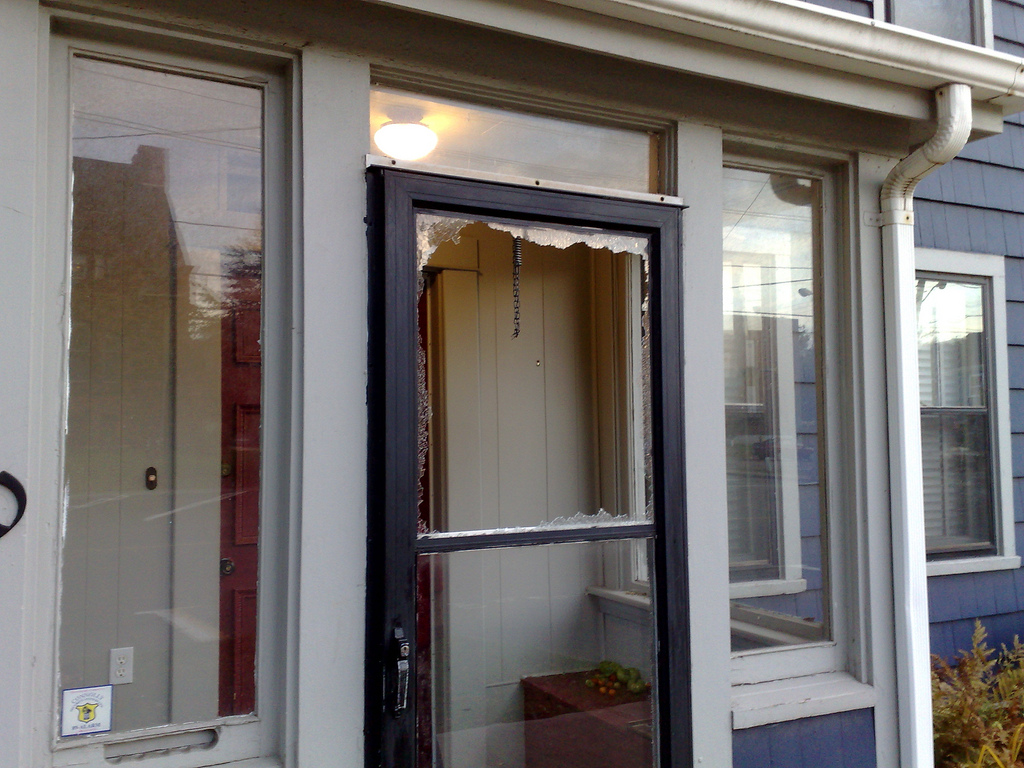
Called the police (wasn’t sure whether this was an “emergency” so I called the non-emergency number) and they took my details and said they would send someone over.
Five minutes later there was a crunch at the front door; opened the door and was greeted by fresh-faced young officer who poked around, didn’t find any projectiles or blood or other evidence of what might have done the smashing. He mused that it might be a pellet gun, but this was just a guess, as there was no real evidence to suggest this other than the absence of other evidence.
He radioed in for an “occurrence number” which he gave to me on a card in case I wanted to submit an insurance claim.
Left the clean-up until morning and then spent the next 2 hours trying to get back to sleep.
Not an important or particularly unusual happening in downtown Charlottetown, but a rip in the inviolacy-of-home continuum nonetheless.
By the time I slouched downstairs this morning Catherine, true to form, was out in the front yard cleaning things up; the photo above is after she’d done most of this.
From Upcycle.it, a European group concerned with the “process of converting waste materials or useless products into new materials or products of better quality or a higher environmental value”:
Garth Taylor, who runs Taylor’s Taters at the Charlottetown Farmer’s Market, has been pretending to retire for several years now, and this year is no exception: true to tradition, he’ll be back at the Farmer’s Market in Charlottetown on November 6, 2010.
Apparently every time I announce his yearly return the word gets around, so it seems only right that I continue my tradition and point you to his return in three weeks. Among other things he sells the best carrots on the Island.
Nigel Roe was generous enough to let me back into his type cabinet at Holland College this week. It’s a challenging collection of type to wade through, having been exposed to the exigencies of students over the year, and thus missing significant things, like most vowels, for many faces.
But I managed to pull together all the letters I needed to make some business cards, and I put them together this afternoon:
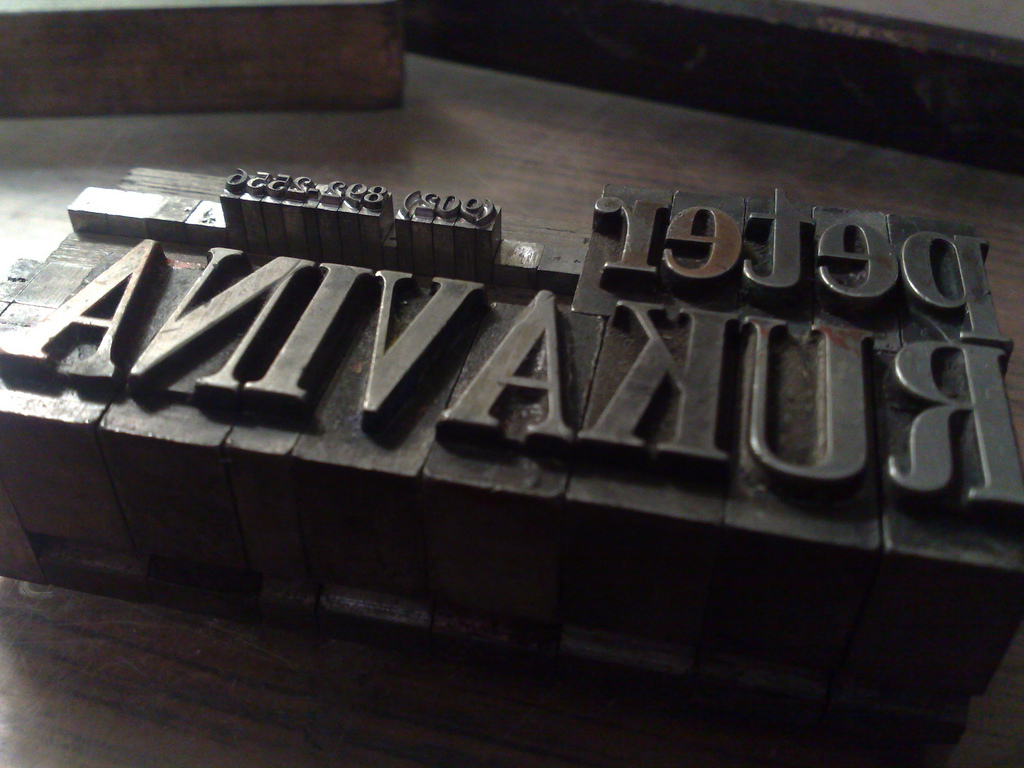
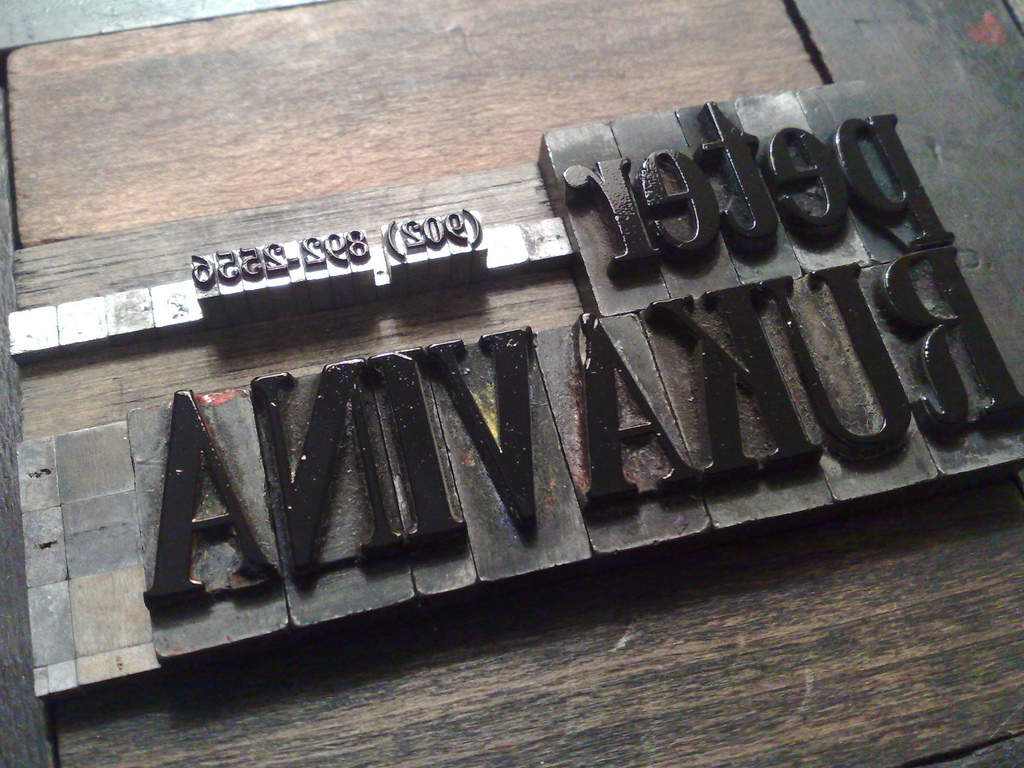
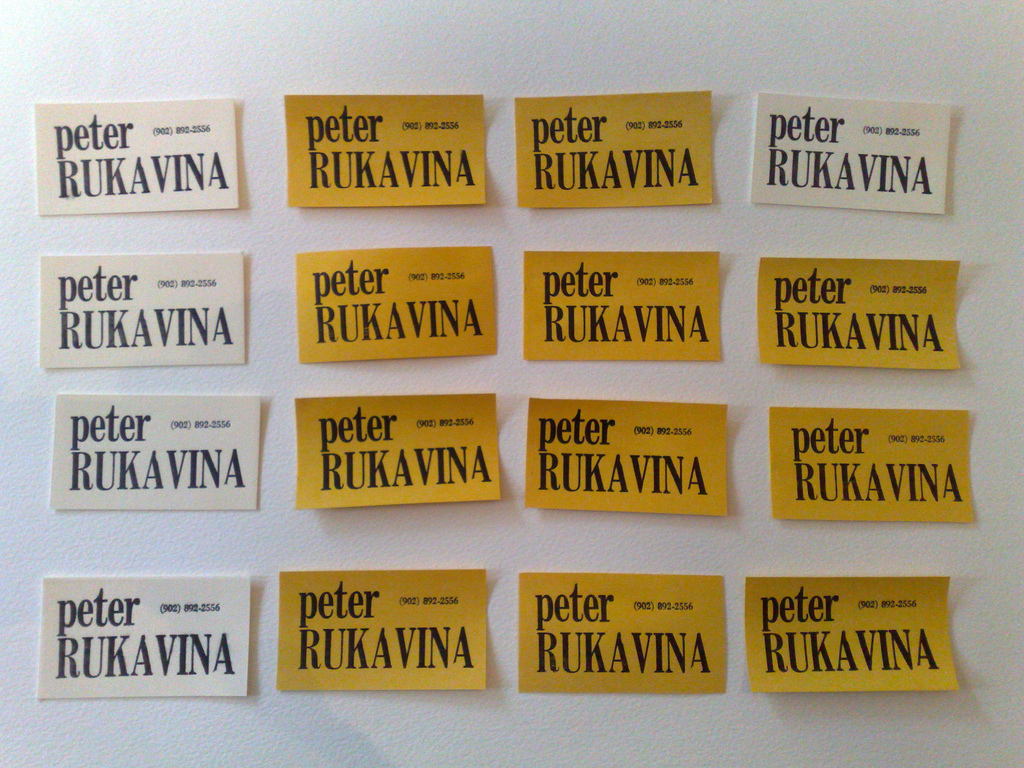
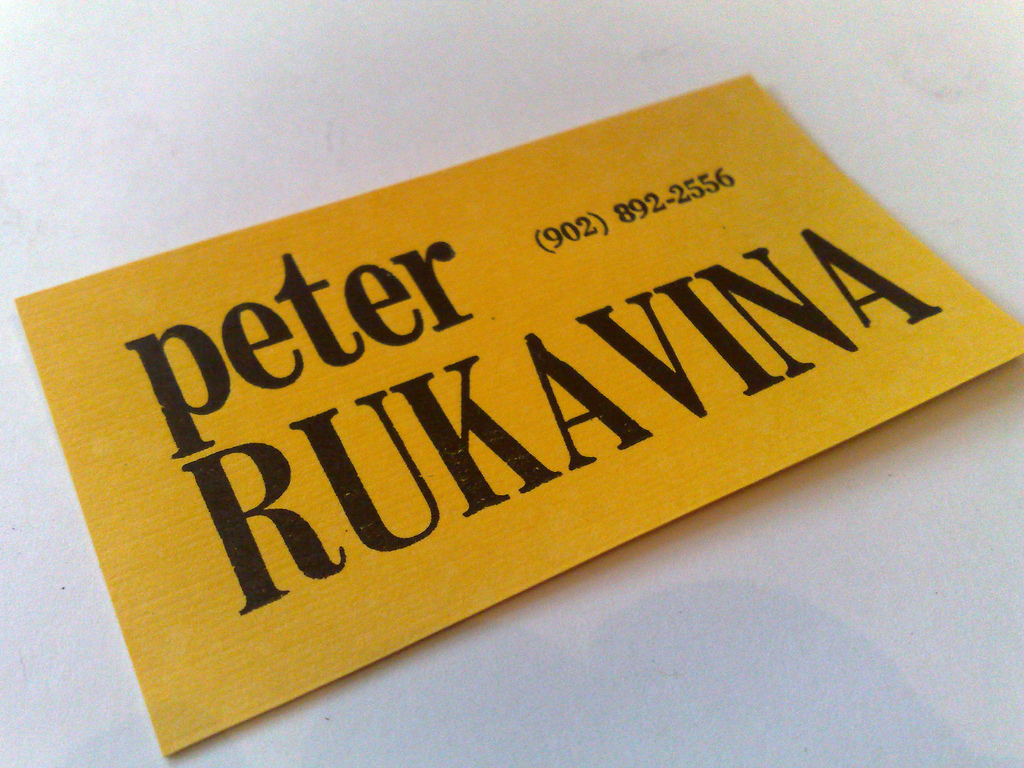
I printed both on bright yellow Artoz card stock that Catherine brought back from Halifax a couple of weeks ago and on 110 lb. Lettra in ivory. I used a variation of my “spritzing with water” technique suggested by printmaker Erin Bateman: I spritzed more heavily than usual, and then blotted out the excess water on a sheet of white card stock. The result was much damper stock, and a much more satisfying print.
You’ll notice that the final upper case A is missing its left foot: that’s an issue with the piece of metal type, which is too worn down in this area to make an impression. There’s also the unpleasant lack of kerning (“moving letters closer together so they’re more harmoniously intermingled”) between the A and the V, but, short of getting out a hacksaw, I was limited by the dimensions of the type.
The irony of all of this, of course, is that I work in a business where I seldom have the need for business cards. Perhaps it’s time to go out mingle.
Spotted in an 1847 issue of the Royal Gazette for Prince Edward Island:

By accident of birth, I am an American citizen (because of parentage I’m also a Canadian), and as such I can vote by absentee ballot in U.S. elections. The oddest thing about this process (other than that I’ve not actually lived in the U.S. for 44 years) is that I vote at the address I last lived at in the U.S., which is 863 Post Avenue, Rochester, NY, which is where my parents lived when I was born, and for 4 months after.
Two days ago my ballot arrived in the mail – I’d registered as an absentee voter in the 2008 election and the ballots seem to just keep on coming automatically – and here are the parties I can choose among for the two United States Senator and one Representative in Congress position:
- Democratic
- Republican
- Independence
- Conservative
- Working Families
- Green
- Libertarian Antiprohibition
- Libertarian
- Antiprohibition
- Tax Revolt
- Rent is 2 Damn High
(It seems that for one United States Senator position there’s a single candidate on the “Libertarian Antiprohibition” ticket whereas for the other the ticket is split between a Libertarian and an Antiprohibition candidate.)
From the pot-leaf symbol on the ballot (yes), I’m assuming that the “prohibition” that’s being opposed here isn’t alcohol.
Now my candidate research process begins.
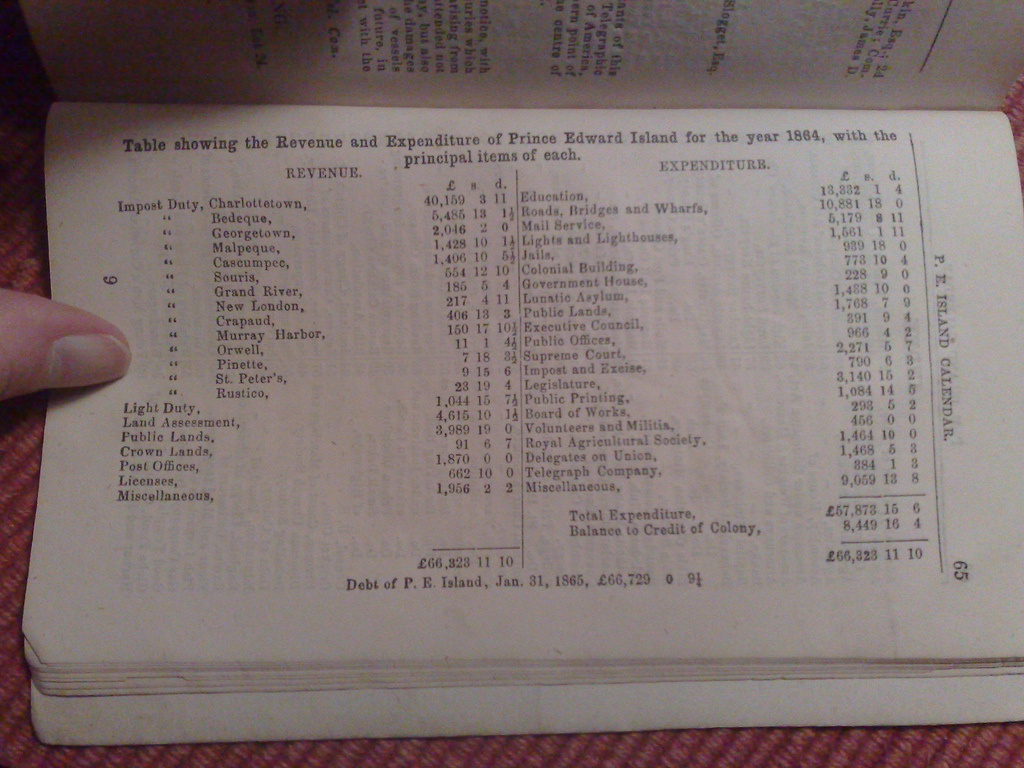
 I am
I am